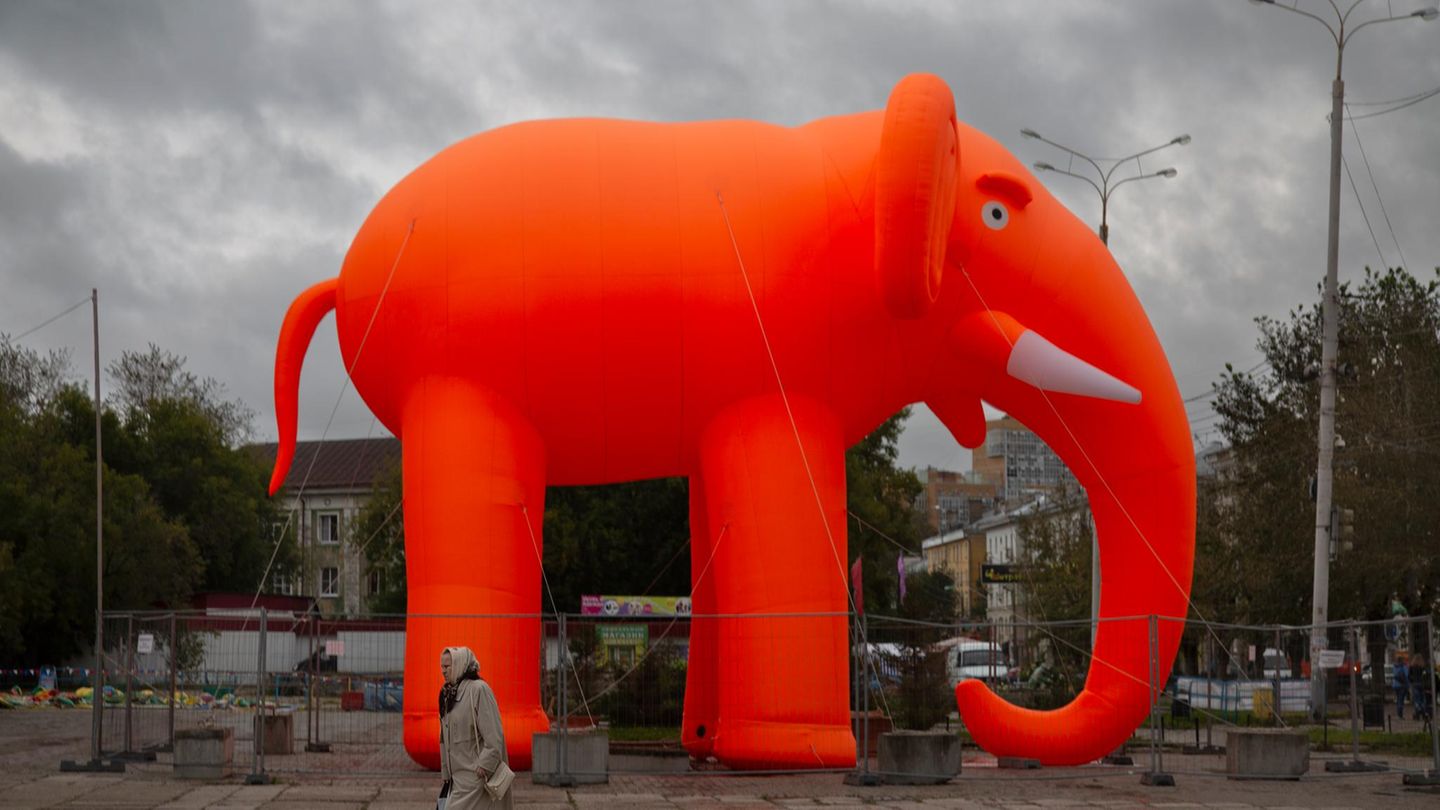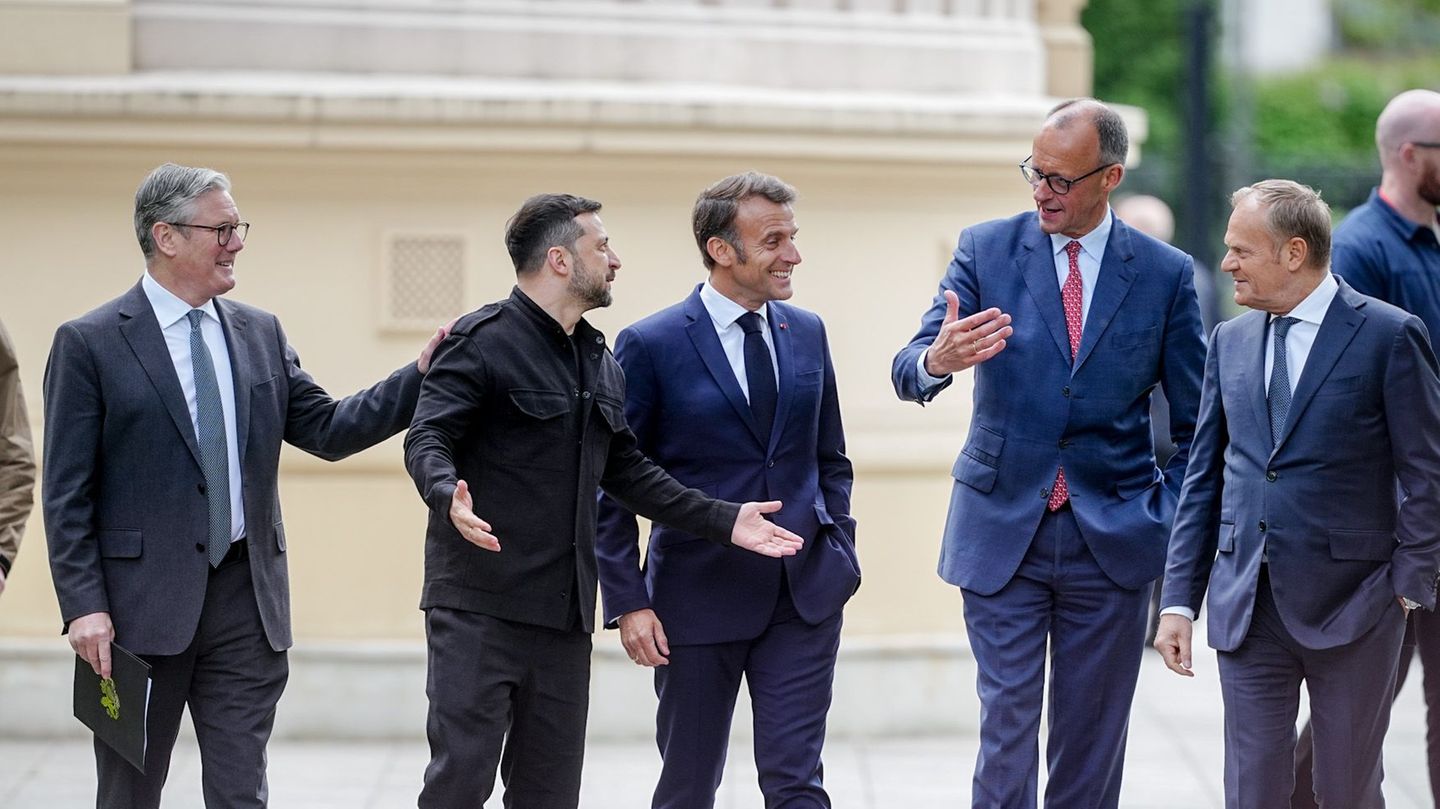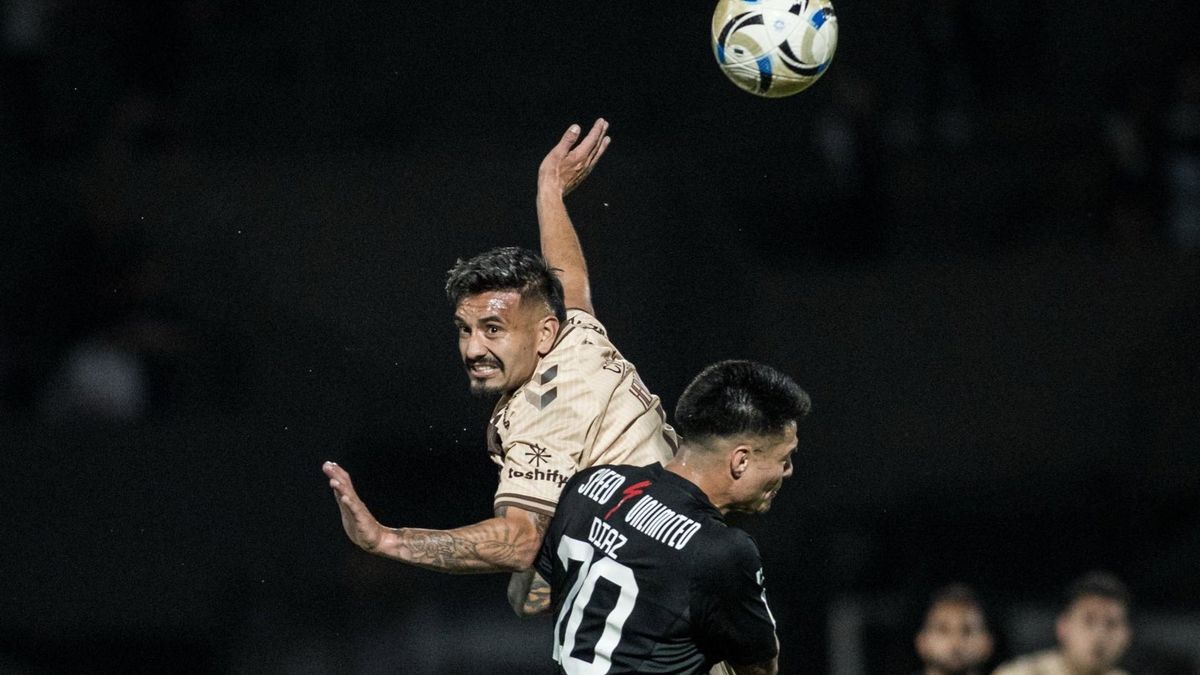Peace close to gripping?
How things could go between Russia and Ukraine
Copy the current link
Add to the memorial list
Is there finally an end in sight in the Ukraine War after more than three years? The Europeans start their first major diplomatic initiative, Putin plays the ball back. And now?
For Chancellor Friedrich Merz, it is the “largest diplomatic initiative of the past few months” that was started in Kiev. There was talk of a “historical” moment in the garden of the Marienpalast together with the French President Emmanuel Macron, Great Britain Prime Minister Keir Starmer as well as the Polish Prime Minister Donald Tusk and the Ukrainian President Wolodymyr Selenskyj presented a kind of timetable to end the Russian attacking war that had been raging for more than three years: Waffenruhe, then negotiations and in the end hopefully a solution.
But just hours later, shortly after the Chancellor’s return to Berlin on Sunday night, the initial euphoria of disillusionment gave way. In a first reaction, Putin did not respond to the ultimately formulated proposal of a ceasefire, but instead made his own suggestion. This in turn is not acceptable for the Europeans. What now?
What do the Europeans propose?
You want an unconditional ceasefire to come into force at first – at the beginning of this Monday and initially for 30 days. The time window is to be used to get serious negotiations between Ukraine and Russia about the end of the war.
Who is behind the European proposal?
The initiative comes from Germany, France, Great Britain and Poland. In a video count, the “coalition of the willing” was taken away in which the supporters of Ukraine have networked. More than 20 other heads of state and government took part. Macron then called US President Donald Trump on his cell phone shortly after 6 a.m. He put his phone out loud and tried to get him on board with the others. There is a photo of how the five sit on a sofa during the phone call in front of Macron’s cell phone:
According to the European side, Trump gave back forwarding for the advance – as on Thursday in a phone call with Merz. “We know that the United States supports us,” said Selenskyj.
How do the Europeans want to enforce their proposal?
With the threat of sanctions – especially in the energy and financial sector. The details are still open. The Europeans also consider additional arms deliveries to put pressure on Moscow.
How did Putin react?
He drummed up journalists in the middle of the night of Sunday and made a counter offer. The Kremlin boss wants direct negotiations between Moscow and Kyiv in Istanbul. Putin suggested that the talks should begin this Thursday (May 15th) without priority. Later, however, his foreign policy advisor Juri Uschakow said that Russia had a basic structure of demands. On the one hand, the results of the previous round of negotiation from 2022 – also in Istanbul – should be taken into account, and on the other hand, developments on the front since then.
What was negotiated in Istanbul in 2022?
In the draft of an agreement at that time, Ukraine had to do without NATO accession. The signing finally failed because Russia wanted to be a guarantee for the security of Ukraine, but himself called for a veto law against the intervention of other countries such as the United States or Great Britain. This would make Ukraine completely dependent on good will in the Kremlin.
How does Putin feel about the proposed ceasefire with Ukraine?
Putin’s negotiation offer can be understood as an answer to the demand for an unconditional ceasefire, but he did not explicitly discussed it. The spokeswoman for the Russian Ministry of Foreign Affairs, Maria Sacharova, later said that it must first be talked about the causes of the conflict, then about a ceasefire. The denial of a previous fire break should have two reasons: firstly, Putin wants to demonstrate strength and therefore do not accept ultimatum. Second, Moscow sees herself on the battlefield in the upper hand.
By continuing the fights, the Kremlin wants to keep the pressure on Kiev high during the negotiations in order to enforce as many of his demands as possible. At the same time, it is also much easier for Putin to abort negotiations as unsuccessful as long as his troops are still fighting. Putin not only makes these units in motion after a longer ceasefire not only in international perception, but is also more difficult to domestic, since there is also hope for peace in Russia after three years of war.
How do Kyiv and Europeans react to Putin’s offer?
They officially see Putin’s offer as a positive sign, but do not want to move away from their plan: “First the weapons have to be silent, then conversations can begin,” said Merz. Selenskyj and Macron commented similarly. The connection that Putin draws on the conversations failed in 2022 is not well received by the Europeans. Negotiations on peace, while the mutual attacks continue, are out of the question for them.
What does Trump say?
He expresses himself confidently, but as so often unclear. “A big day for Russia and Ukraine,” he wrote on his online language tube Truth Social. He would continue to work on both sides to end the endless “bloodbath”. “A big week is imminent!” The purpose optimism is known from Trump, especially on the Ukraine question. Whether there is something behind it remains open.
What’s next?
The week begins with the end of the ultimatum of Europeans to Putin. Should Russia not let its weapons be silent until the end of the day, they want to make their threats true and react with sanctions. The preparations for this are underway. There could be decisions during the week. Unless there is still movement on the Russian side.
Where the United States and Russia are more similar than one thinks

Russia: elephant in Perm
Russia or the USA? When looking at the pictures of photographer Seamus Murphy, you quickly lose your orientation. What looks like the party salt elephant of US President Trump’s Republicans is advertising for a circus in Perm. “In many ways, Russia felt less strange to me than the USA,” says Seamus Murphy. The ire lived in the USA for a long time and repeatedly traveled to Russia, whose dilapidated outdoor districts remind him of “a darker, poor Ireland before the ‘Celtic-Tiger’ economic boom”
© Seamus Murphy
More
Open the image subtitle
Back
Further
Which EU sanctions against Russia would still be possible?
Since the beginning of the war of aging Moscow against Ukraine, the EU has launched 16 sanction packages against Russia. They include travel restrictions, freezing assets and a number of import and export restrictions, for example for Russian energy sources such as coal and oil.
A 17th sanction package is currently being prepared. Suggestions of the European Commission provide for further tightening the procedure against the so -called Russian shadow fleet for the transport of oil and oil products. It is also planned to target dozens of other companies that are involved in the bypass of existing sanctions or support the Russian armaments industry.
However, the new sanctions should go well beyond these previously known plans. The heads of state and government deliberately do not yet give details on Friday. Negotiations within the EU are likely to be difficult because the Member States in many sectors have national interests, especially when it comes to energy sectors. It is unlikely that the EU will go to the frozen Russian assets in the Member States.
Dpa
YKS / André Ballin, Michael Fischer, Katharina Redanz
Source: Stern
I have been working in the news industry for over 6 years, first as a reporter and now as an editor. I have covered politics extensively, and my work has appeared in major newspapers and online news outlets around the world. In addition to my writing, I also contribute regularly to 24 Hours World.




